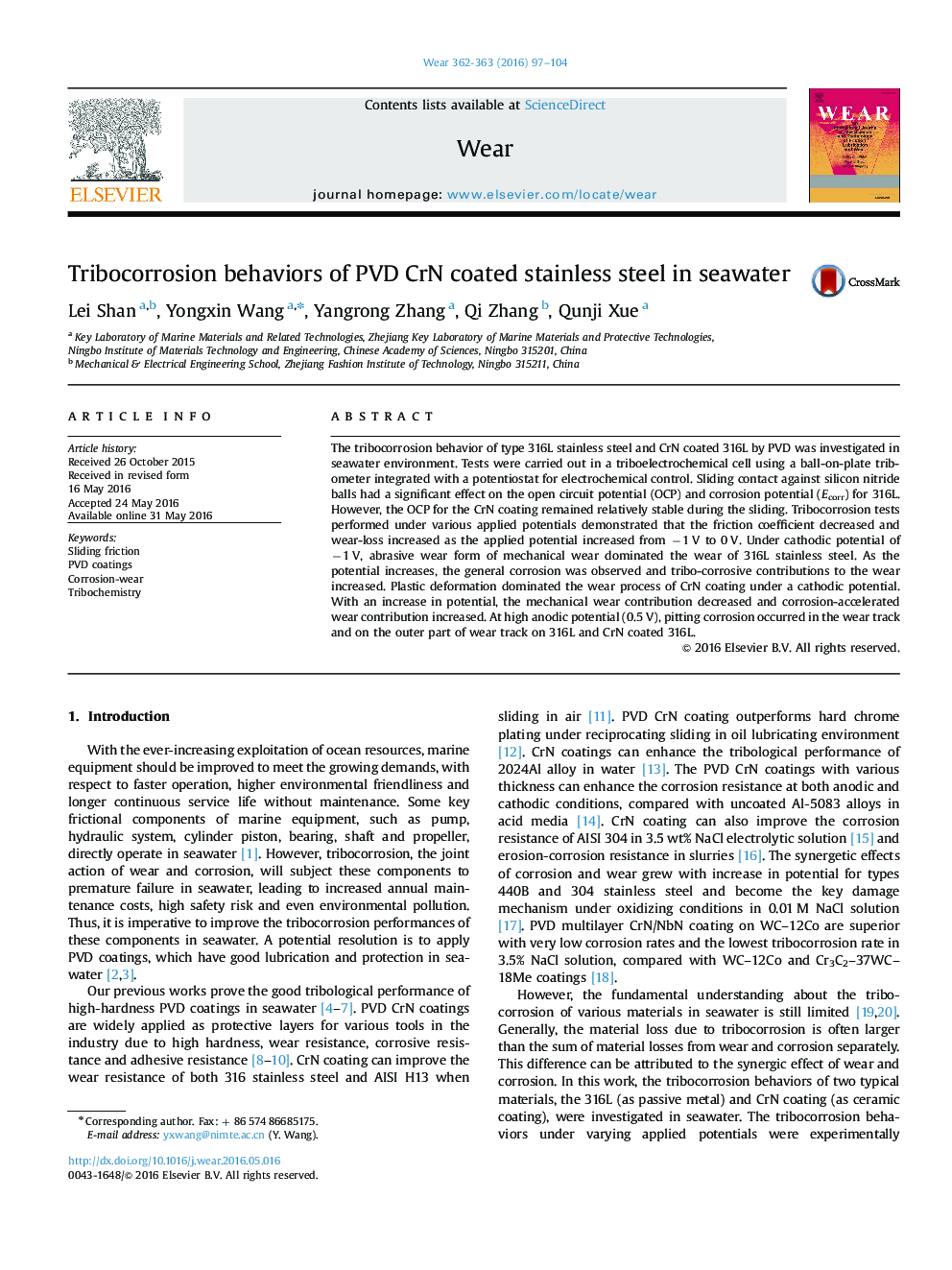| Article ID | Journal | Published Year | Pages | File Type |
|---|---|---|---|---|
| 616859 | Wear | 2016 | 8 Pages |
Abstract
The tribocorrosion behavior of type 316L stainless steel and CrN coated 316L by PVD was investigated in seawater environment. Tests were carried out in a triboelectrochemical cell using a ball-on-plate tribometer integrated with a potentiostat for electrochemical control. Sliding contact against silicon nitride balls had a significant effect on the open circuit potential (OCP) and corrosion potential (Ecorr) for 316L. However, the OCP for the CrN coating remained relatively stable during the sliding. Tribocorrosion tests performed under various applied potentials demonstrated that the friction coefficient decreased and wear-loss increased as the applied potential increased from â1Â V to 0Â V. Under cathodic potential of â1Â V, abrasive wear form of mechanical wear dominated the wear of 316L stainless steel. As the potential increases, the general corrosion was observed and tribo-corrosive contributions to the wear increased. Plastic deformation dominated the wear process of CrN coating under a cathodic potential. With an increase in potential, the mechanical wear contribution decreased and corrosion-accelerated wear contribution increased. At high anodic potential (0.5Â V), pitting corrosion occurred in the wear track and on the outer part of wear track on 316L and CrN coated 316L.
Related Topics
Physical Sciences and Engineering
Chemical Engineering
Colloid and Surface Chemistry
Authors
Lei Shan, Yongxin Wang, Yangrong Zhang, Qi Zhang, Qunji Xue,
